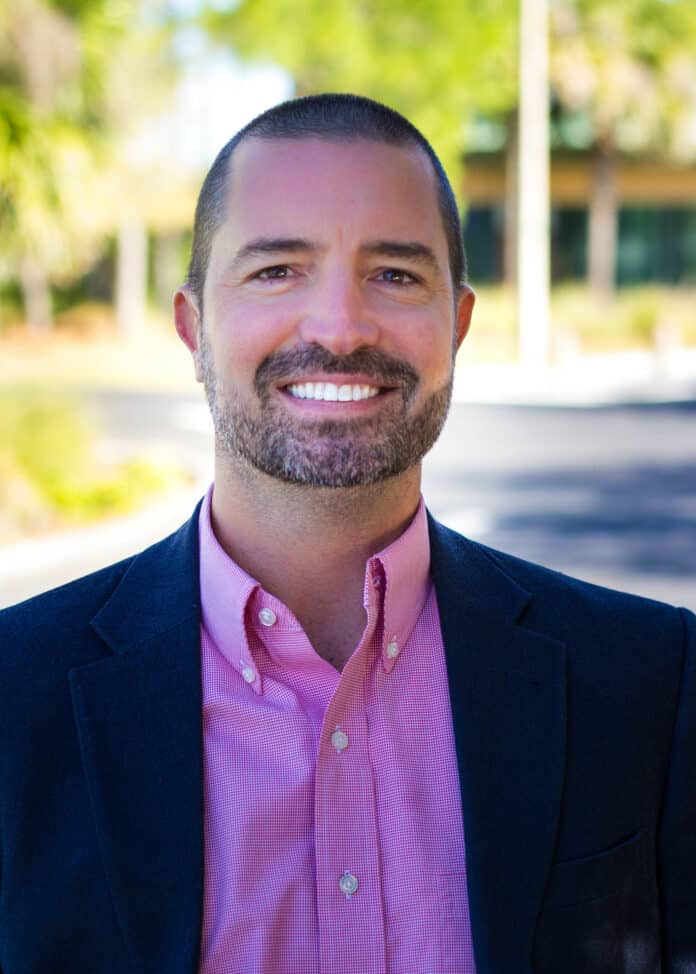Stormwater ponds are common throughout neighborhoods and commercial developments in Florida, but many residents are unaware of their purpose, often mistaking them for natural water bodies. Southwest Florida Water Management District ERP Evaluation Manager David Kramer answers some of the most commonly asked questions from residents about stormwater ponds in their neighborhood.
Q: What are stormwater ponds and why do we need them?
A: A stormwater pond is designed to collect and manage runoff from rainwater. When rainwater lands on rooftops, parking lots, streets, driveways and other hard surfaces, the rainfall that doesn’t soak into the ground (stormwater runoff) flows into your neighborhood stormwater pond through grates, pipes, shallow swales or ditches. Stormwater ponds are required for most new development (since the 1980s) and are specifically designed to help prevent flooding and remove pollutants from the water. Without these ponds, stormwater would carry pollutants like litter, motor oil, gasoline, fertilizers, pesticides, pet wastes, sediments and anything else that can float, into nearby streams, rivers, lakes, wetlands, estuaries or the Gulf of Mexico.
Q: Who is responsible for maintenance of stormwater ponds in my neighborhood?
A: Once the developer has completed construction of the roads and drainage system in a neighborhood, the property owner’s association (or in some cases, a community development district (CDD)) is typically responsible for maintaining the neighborhood drainage system, including the stormwater ponds. The long-term upkeep and maintenance of the ponds become the responsibility of the association or CDD, including labor and expenses for keeping the system functional.
Q: Can I remove vegetation from my stormwater pond?
A: Many stormwater ponds are designed and required to include native aquatic vegetation. Native vegetation will filter polluted runoff, trap sediments, control the growth of nuisance vegetation and help make the pond aesthetically pleasing. Aquatic plants pump oxygen into the water and create habitat by providing cover and nurseries for fish and other organisms. Pond owners often request approval to remove vegetation that becomes overgrown in stormwater ponds. Removal of exotic, nuisance and excess vegetation is allowed. Just make sure to consult your association or CDD and the District before removing any significant amount of vegetation. The District recommends selective maintenance and removal by hand rather than mass removal of native wetland vegetation that becomes established in a stormwater pond. The District does not recommend cutting, mowing, using herbicides or introducing grass carp to remove native vegetation. In addition, if using herbicides, use only herbicides labeled for aquatic use. Herbicides not labeled for aquatic use may harm fish and other aquatic life, and their application to aquatic sites is prohibited by state and federal law.
Q: Is it OK to use stormwater ponds for recreational purposes such as fishing, swimming, kayaking or stand-up paddle boarding?
A: Recreational use of stormwater ponds is potentially hazardous to your health and is not recommended. Stormwater ponds are designed to capture and retain stormwater runoff, which may contain many different types of pollution including sediments, oils, greases, trash, nutrients, heavy metals, pesticides, herbicides, and pathogens.
Q: What can residents do to help prevent pollution and flooding in stormwater ponds?
A: Never fill or obstruct stormwater ponds, swales and retention systems, as that will potentially keep the stormwater pond from working as designed. Don’t dump excess oils and other chemicals from your home or yard waste, including grass clippings, into stormwater drains or ponds. Also, be sure to clean up pet waste so nutrients and bacteria don’t enter stormwater drains.
David Kramer, P.E.
ERP Evaluation Manager
Southwest Florida Water Management District
David Kramer is a professional engineer and has served as the engineering manager of the Environmental Resource Permit (ERP) Evaluation Section since 2006. David and his staff are responsible for the evaluation of construction permit applications for residential, commercial, roadway and other site construction projects within all or part of the 16 counties encompassed by the Southwest Florida Water Management District.

